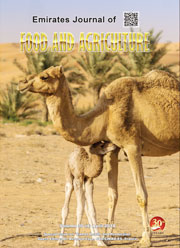ASSESSING GENETIC DIVERSITY OF THREE TUNISIAN DROMEDARY CAMEL (CAMELUS DROMEDARIUS) SUB POPULATIONS USING MICROSATELLITE MARKERS
DOI:
https://doi.org/10.9755/ejfa.v27i4.19258Keywords:
Camel, Genetic diversity, Microsatellites, TunisiaAbstract
One of the main tasks of the PROCAMED project is to promote research on genetics of dromedary camel. In this regard, and to evaluate the genetic diversity among Tunisian dromedary camel, a total of 62 blood samples were collected from unrelated animals in three different regions (Tataouine, Medenine and Kebili) and belonging to three sub-populations (Ourdhaoui Médenine, Ourdhaoui Tataouine and Merzougui) defined on the basis of morphologic and geographic criterions. From seven microsatellite markers used only four were successfully amplified resulting in a total of 26 alleles observed in the three sub-populations with a mean number of alleles (MNA) of 6.5. Unbiased expected heterozygosity (He) ranged from 0.76 to 0.84 whereas the observed heterozygosity was absolute (Ho = 1) and an excess of heterozygotes was observed in the three groups for all four loci. The mean estimates of the fixation index FST was 0.052 showing a moderate genetic structure between the different sub-populations. Little differentiation was observed between Ourdhaoui Médenine and Merzougui sub-populations, compared to Ourdhaoui Tataouine sub-population which seems to be more established. The results showed the limits of camel classification on the basis of only morphologic and regional distribution criterions.










 .
.